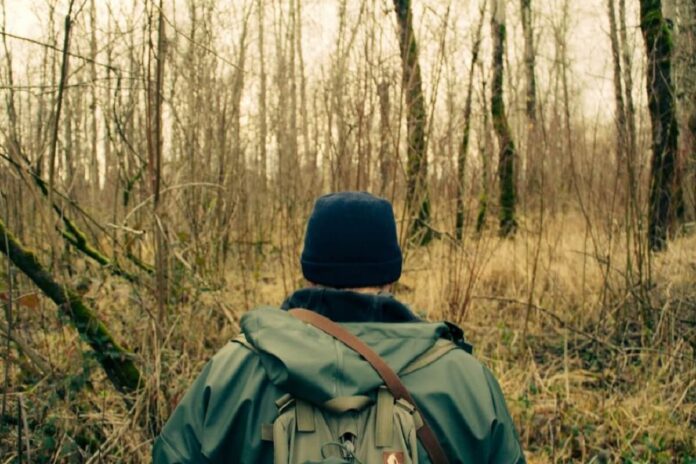It’s time to get ready for your hunting trip in 2023. You’ve prepared yourself, got the right gear, and now it’s time to ensure a successful trip. Several things will make or break the hunt, whether you’re going on a solo trip or with a group of friends or family members. This post will give you a checklist for being prepared from head to toe so that everything goes smoothly and everyone has fun.
Get Your Hunting License
The first step to becoming an active hunter is getting your hunting license. According to NSSF, there were 5,079,745 hunting license holders in 2021. Depending on what animal you want to hunt, there are different types of licenses, but the most common one is a deer license. You can usually get one online through the state’s website or at some locations in person.
The cost varies by state, so it’s best to check with them beforehand if you’re still determining how much it will cost. They may also offer discounts for veterans and seniors, as well as women and families, so keep that in mind while applying.
You’ll find that many states allow online applications, which makes things easier when trying to stay organized during hunting season.
Get Your Hunter Safety Course Certification
As a beginner hunter, you will want to get your Hunter Safety Course certification as soon as possible. Not only is it good practice and preparation for the actual hunting trip, but it also shows that you are serious about your work as a hunter. Generally, students who are 16 years and older can complete the firearms safety course online.
While there are many different ways to get your certification, we recommend enrolling in one of the many online courses available today. These courses usually take less than 30 minutes per day and can be completed within 2 weeks.
They include modules on topics such as wildlife identification and behavior, firearm safety, hunting ethics, landowner relations, outdoor survival skills, safe handling of game animals after harvest, and field dressing techniques for both small-game species and large-game species.
By completing this course, you will demonstrate your commitment to becoming an effective hunter and gain valuable knowledge that will help ensure a successful first season.
Buy the Right Gear
According to Grand View Research, the global hunting equipment & accessories market was valued at $19.90 billion in 2021. You’ll need to buy some quality gear to make the most of your trip. If you’re hunting in the woods, consider investing in a good pair of boots and gloves. Remember that a good hat is also essential for staying warm and dry.
For those planning bird or deer hunting, binoculars can be handy. They allow hunters to get closer to their targets without being detected by them before an arrow or bullet shoots them down.
If you’re looking for a range finder to help calculate how far away an animal is from where it’s hiding out, consider investing in one made by Bushnell or Brunton. They have excellent reputations within their respective industries.
A compass can help keep hunters on track when heading into uncharted territories. It’s essential not only when navigating but also when setting up camp at night, which will prevent getting lost during dark hours when visibility isn’t optimal due to lack of sunlight around trees, etc.
Learn How to Use a Map
Learning to use a map is one of the most critical skills for a successful hunting trip, especially if you’re new to the sport. There are several types of maps you may need on your next hunting trip:
- Topographical maps show elevation changes in great detail and will be helpful when trying to find hidden paths or trails that deer might use. A topographical map also shows land features such as streams, lakes, swamps, and hills.
- Road maps help you know where you are about significant roads or highways in your region so you can get back home if needed during bad weather conditions.
- A compass is used for orientating yourself with respect to cardinal directions. If you’re unsure about the north direction, then point any metal object towards magnetic north) by following these steps:
- Hold the compass needle upright on the table, pointing at the N arrow mark inside the housing.
- Rotate the housing until the dial lines up with the black index line.
- Read bearing from the dial window.
- This is your actual magnetic course reading
Get Permission to Hunt on Public Lands
It is the most important thing you can do. Asking permission to hunt on private land is easy, just knock on their door and ask politely. However, things are a little more complicated when it comes to hunting public lands. You need to check with the land manager before even thinking about getting any rifles out of the safe or putting on a backpack full of gear.
The land manager might tell you that hunting isn’t allowed at all, or perhaps they’ll give you some guidelines for when and where it’s okay for hunters like yourself, or maybe they’ll be happy for anyone who wants to go out there and shoot something as long as they don’t do any damage themselves. It depends on where this particular patch of wilderness happens to be located and what kind of wildlife lives there.
Check Your Gun and Carry Enough Ammunition
Make sure your gun is in good working order. If you don’t know how to check your firearm, ask someone who does. It sounds simple, but sometimes it is best to have a professional make sure everything is okay.
Check your ammunition and make sure it is in good condition. It includes checking the ammunition for dents, dings, scratches, or other damage that can affect performance during shooting. Also, check each round to ensure they are not corroded or discolored by water or oil. You can check out a reputed website for more information about ammunition.
It’s always recommended that hunters carry enough ammunition for their next hunt and some extra just in case something happens during their trip that requires additional rounds to protect against predators such as bears or mountain lions.
Practice Beforehand
You need to practice more. You must have a solid understanding of your weapon’s capabilities and limitations, so it doesn’t get the best of you when you’re out in the field. It would help if you also practiced shooting in different conditions like wind, rain, and darkness. This way, there are no surprises when hunting season rolls around.
Practice shooting with ammunition similar to what will be available on your trip, not just the same brand or caliber but also weight and grain size. That way, if one type throws off your accuracy, another type will probably work fine. This way, there will be no surprises on the trip day.
Don’t forget to practice shooting at different distances as well. This will ensure that something like sudden movement doesn’t cause your shot to go wide while trying to take down prey from afar with long-range weapons like rifles or bows.
Check the Weather and Make Sure You’re Prepared for It
The weather can be unpredictable and often change at a moment’s notice, so you must keep an eye on it before you set out. If you are hunting in 2023, there is a good chance that the weather could be cold or rainy. If so, make sure that you bring extra clothing and blankets to stay warm and dry during your trip.
It’s also possible that your hunt will happen during all four seasons of the year, and some hunters prefer hunting in all seasons for variety. If there is rain forecasted for the day of your trip, pack rain gear and an umbrella or poncho if needed.
Be Respectful of Wildlife
It is the most critical rule because respecting and considering wildlife will dictate how the animals receive you. There’s no need to chase an animal down or approach it from behind, as this only makes them feel threatened and can cause them to run away or become defensive.
When you decide to take a shot, ensure that you have an unobstructed line of sight and that your target is within range of your weapon. The last thing you want is for your bullet to go astray after being deflected off a branch or rock in its path and remember the wind direction.
Conclusion
If you research and plan ahead, you can be sure that this next hunting trip will be great. The checklist above should give you some ideas about how to get started on preparing for your next adventure in the woods. You’ll want to ensure you have all the right gear before going out with just yourself (or maybe some friends).




























